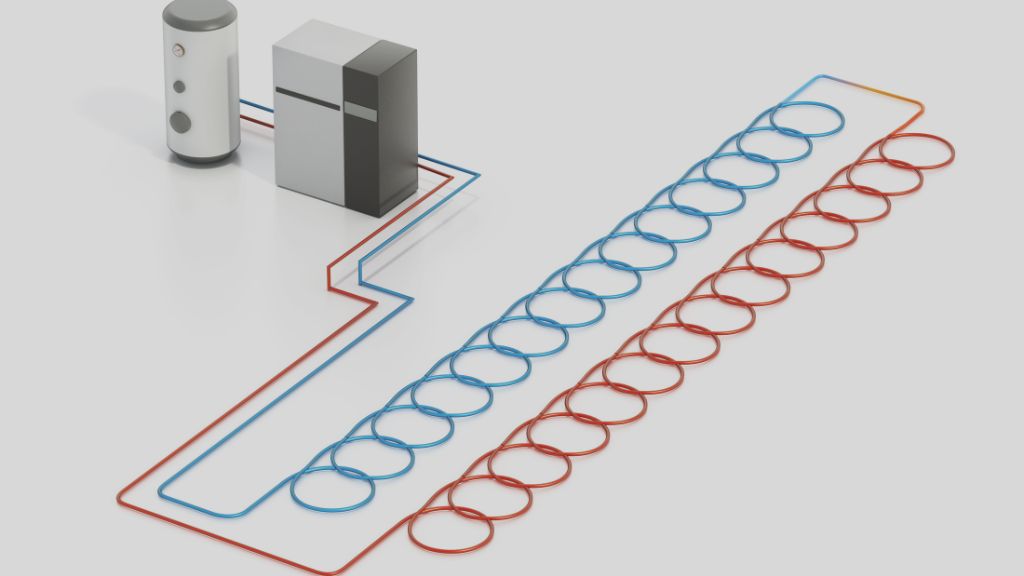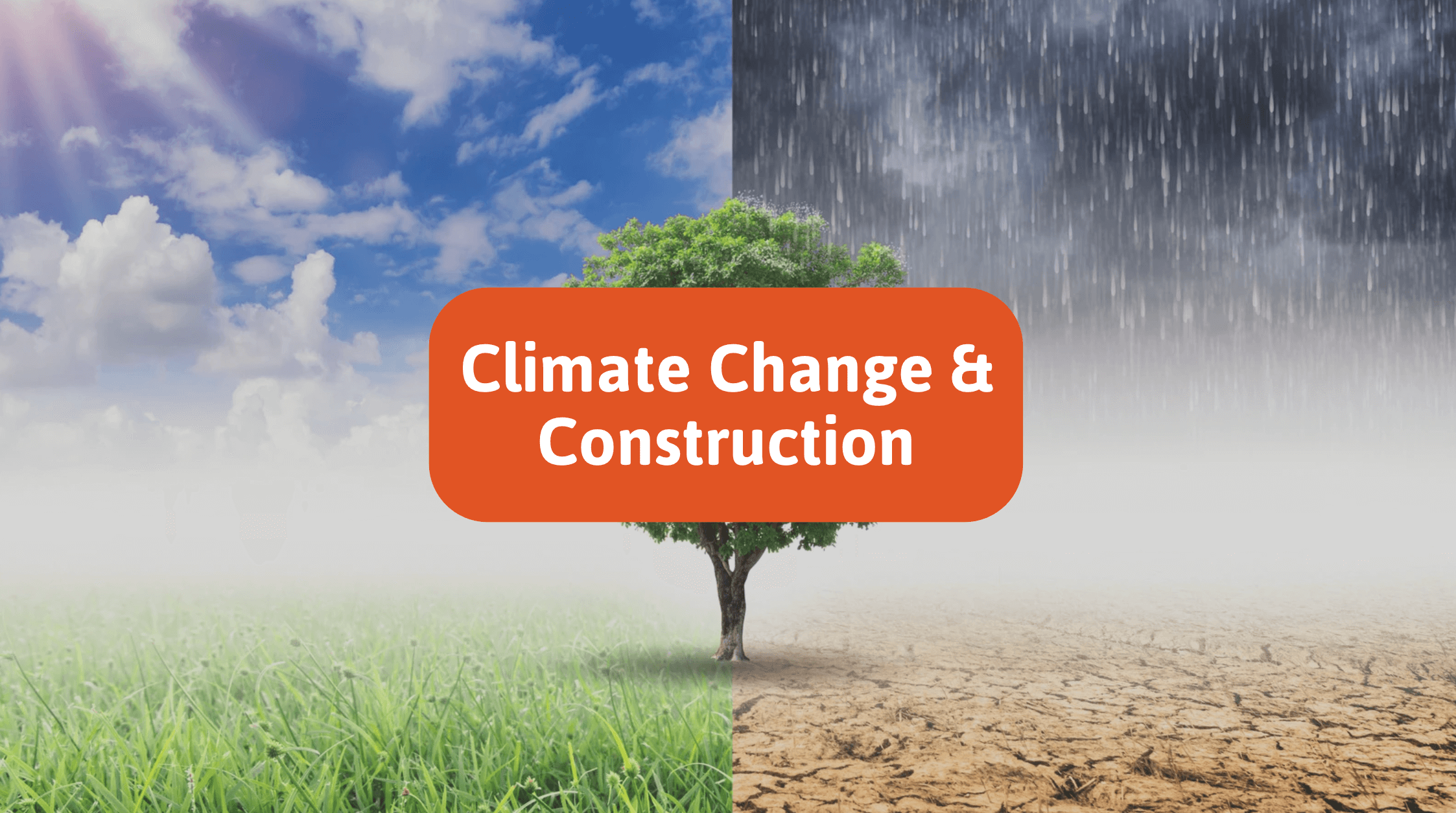Climate change is a global concern that affects every aspect of our lives, including the construction industry. Construction activities significantly contribute to carbon emissions and environmental degradation, but the industry also holds the key to mitigating climate change through innovative green building practices. This article will explore how the construction industry can combat climate change by embracing green design, green architecture, and technologies like air-source and ground-source pumps.
The Impact of Construction on Climate Change
The construction industry is one of the largest consumers of raw materials and energy, which makes it a major contributor to carbon emissions. The sector is responsible for a significant percentage of the world’s total CO2 output, and the widespread use of energy-intensive materials like concrete and steel exacerbates this.
Greenhouse Gas Emissions from Construction
The production and transportation of construction materials and the energy required for building operations result in substantial greenhouse gas emissions. Moreover, the demolition and waste generated from construction activities add to the environmental burden, as much of this waste is in landfills.
Energy Consumption in Buildings
Buildings consume significant energy, mainly for heating, cooling, and lighting. This consumption increases emissions, contributing to global warming and climate change. To address these issues, the construction industry is under pressure to adopt more sustainable practices.
Embracing Green Building Practices
Green building practices are essential for reducing the environmental footprint of construction activities. These practices focus on minimising waste, using sustainable materials, and designing energy-efficient buildings with a lower environmental impact.
Air Source and Ground Source Pumps
Air and ground source pumps are two technologies that can significantly reduce buildings’ energy consumption. These pumps utilise the ambient air and the consistent temperatures below the ground, respectively, to provide heating and cooling more sustainably.
Air source pumps extract heat from the outside air, even at low temperatures, to heat buildings and provide hot water. Ground source pumps, on the other hand, harness the thermal energy stored in the ground. Both technologies can drastically reduce reliance on fossil fuels for building temperature regulation.
Green Design and Architecture
Green design and architecture go beyond the aesthetic aspects of construction. They involve a holistic approach to building design that considers the environmental impact throughout a building’s lifecycle. Green buildings can achieve significant energy savings by incorporating elements like natural lighting, efficient insulation, and renewable energy sources.
The Role of Green Architecture
Green architecture is an approach to building design that seeks to minimise structures’ negative environmental impact. This approach involves a conscious effort to create resource-efficient buildings that are healthy for occupants and harmonious with the environment.
Green architecture is based on several principles, including energy efficiency, water conservation, and sustainable and non-toxic materials. The design also prioritises indoor environmental quality, ensuring that buildings provide occupants with a healthy and comfortable environment.
The Benefits of Green Buildings
Green buildings not only contribute to mitigating climate change, but they also offer economic benefits. They typically have lower operating costs due to reduced energy and water usage. Additionally, green buildings often provide a higher market value and can increase productivity and well-being for those who use them.
Technology for Sustainability: Air Source and Ground Source Pumps
Adopting energy-efficient technologies like air-source and ground-source pumps is critical to sustainable construction. These systems offer an alternative to traditional heating and cooling methods, which rely heavily on fossil fuels.
How Air Source Pumps Work
Air source pumps transfer heat from the outside air into a building during winter and reverse the process during summer to cool the interior. They are versatile and can be used in various climates, making them a practical solution for reducing energy consumption.
The Advantages of Ground Source Pumps
Ground source or geothermal heat pumps take advantage of the relatively constant temperature below the earth’s surface. By circulating a fluid through underground pipes, these pumps can heat or cool a building efficiently. Ground source pumps are known for their longevity, reliability, and low maintenance requirements.
Integrating Green Technology in Construction Projects

To effectively combat climate change, the construction industry must implement green building practices on a wide scale. This includes adopting new technologies and rethinking traditional construction methods.
Northwest Building Services company Murray Building Services is responding to pressures facing facilities managers and leading construction firms by supplying greener solutions. It has installed several air-source and ground-source pumps for local buildings, including Rochdale Town Hall (introduced an air-source heat pump system to pre-heat the existing heating services), The Museum of Science and Industry, Manchester (ground source heat pump and air source heat pump systems installed to integrate with existing steam and low-pressure hot water systems and reduce the facility’s overall carbon footprint) and Loretto College, Manchester – providing heating and hot water to the education facility through multiple air source heat pumps.
The integration of technologies like air—and ground-source pumps into construction projects is essential for creating sustainable buildings. These systems should be considered from the initial design phase to ensure they are seamlessly integrated into the building’s infrastructure.
Overcoming Challenges to Green Building
While the benefits of green building are clear, there are challenges to its widespread adoption. These include higher upfront costs, more awareness or expertise in green construction methods, and regulatory barriers. However, with the right incentives and policies in place, these challenges can be overcome.
Policy and Incentives for Green Construction
Governments and industry bodies can significantly promote green construction practices. By providing incentives such as tax credits, grants, and rebates for green buildings, they can encourage the industry to adopt sustainable practices.
The Importance of Collaboration
Collaboration between government entities, construction companies, architects, and engineers is crucial for advancing green building practices. The industry can accelerate the transition to more sustainable construction methods through partnerships and knowledge sharing.
The Future of Green Construction
As awareness of climate change continues to grow, the demand for green buildings will likely increase. The construction industry must be prepared to meet this demand by investing in research, training, and developing new green technologies.
Sustainability in building and construction projects is essential to achieving the country’s target of net zero carbon emissions by 2050.
BREEAM, first published by the Building Research Establishment in 1990, is the world’s longest-established method of assessing, rating, and certifying building sustainability.
Conclusion
The construction industry has a significant role to play in the fight against climate change. By embracing green building practices, green architecture, and technologies like air-source and ground-source pumps, the industry can reduce its environmental impact and contribute to a more sustainable future. All stakeholders in the construction sector must take proactive steps to implement these practices and technologies, ensuring that tomorrow’s buildings are beautiful, functional, and environmentally responsible.
If you would like to know more about air source and ground source technologies, please get in touch.

